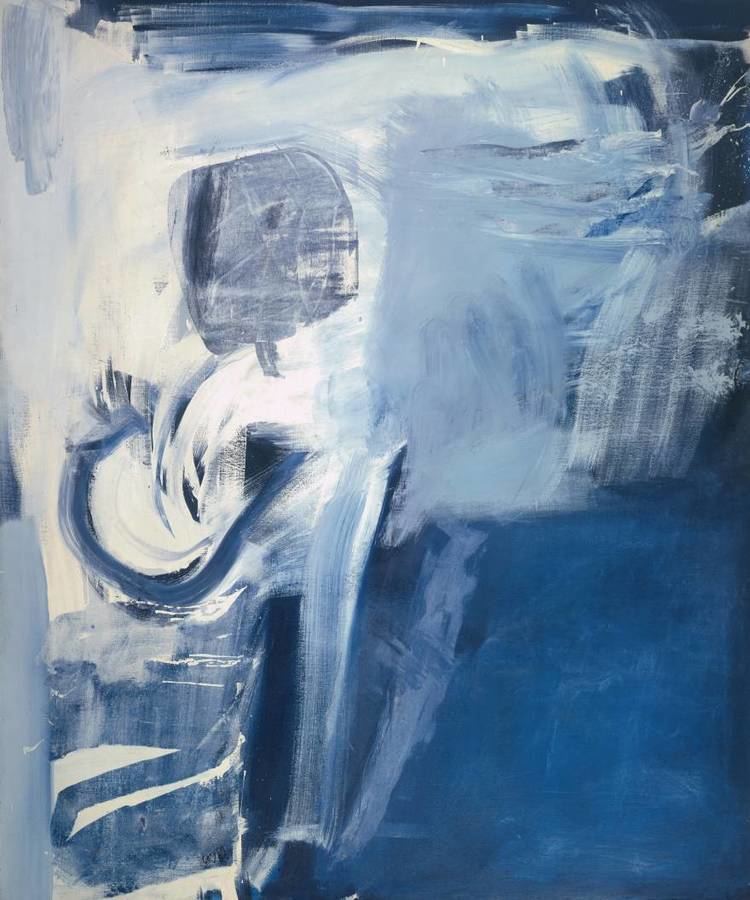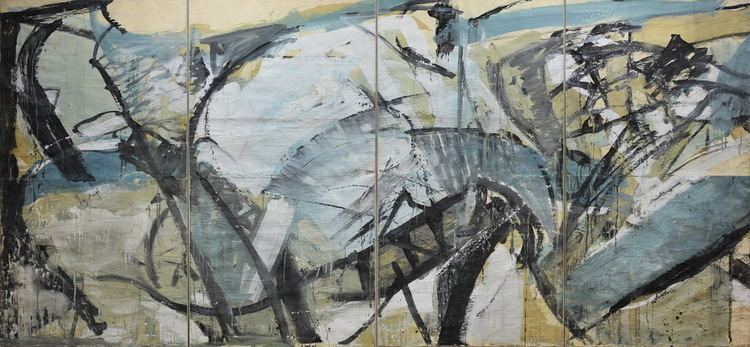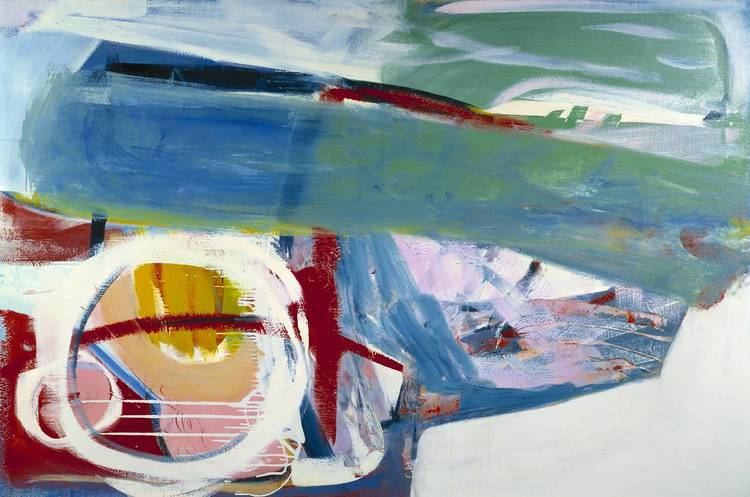Nationality British | Role Artist Name Peter Lanyon | |
 | ||
Movement Modernism, Abstract art Books Pottery and postcards, Wartime abstracts Education | ||
Peter lanyon
George Peter Lanyon (8 February 1918 – 31 August 1964) was a Cornish painter of landscapes leaning heavily towards abstraction. Lanyon was one of the most important artists to emerge in post-war Britain. Despite his early death at the age of forty-six he achieved a body of work that is amongst the most original and important reappraisals of modernism in painting to be found anywhere. Combining abstract values with radical ideas about landscape and the figure, Lanyon navigated a course from Constructivism through Abstract Expressionism to a style close to Pop. He also made constructions, pottery and collage.
Contents

Lanyon took up gliding as a pastime and used the resulting experience extensively in his paintings. He died in Taunton, Somerset, as the result of injuries received in a gliding accident and is buried in St. Uny's Church, Lelant.

In September 2010 Peter Lanyon’s work was honoured with a large-scale retrospective exhibition: Peter Lanyon 9 October 2010 – 23 January 2011 at Tate St Ives. Curated by Chris Stephens, Head of Displays and Curator of Modern British Art at Tate Britain, it was the first thorough museum retrospective for almost forty years. In 2015 Lanyon's Gliding Paintings were shown as a set in the Soaring Flight exhibition at the Courtauld Gallery, London.

Peter lanyon tateshots
Life and career

Peter Lanyon was born in St Ives, Cornwall, in 1918. He was the only son of W H Lanyon, an amateur photographer and musician. He was educated at Clifton College. St Ives remained his base and he received after-school painting lessons from Borlase Smart. In 1937 he met Adrian Stokes who is thought to have introduced him to contemporary painting and sculpture and who advised him to go to the Euston Road School where he studied for four months under Victor Pasmore. In 1936–37 he also attended Penzance School of Art. In 1939 he met established artists Ben Nicholson, Barbara Hepworth and Naum Gabo who had moved to St Ives on the outbreak of the Second World War. Lanyon received private art tuition from Nicholson. The character of his work changed completely and he became very involved with making constructions. Throughout the 1940s the influence of Nicholson and Gabo remained very evident in his work. From 1940 to 1945 he served with the Royal Air Force in the Western Desert, Palestine and Italy.
In 1946 he married Sheila St John Browne (1918/19 – 18 November 2015). Their first child, Andrew Lanyon, was born in 1947. In total six children were born to the couple between 1947 and 1957.
In 1946 he became an active member of the Crypt Group of Artists in St Ives. During the 1950s he became a leading figure in the St. Ives group of artists. Lanyon travelled around Italy in the summer of 1948. In 1949 he became a founder member of Penwith Society of Arts in Cornwall.
He had his first solo exhibition at the Lefevre Gallery, London in 1950. He taught at the Bath Academy of Art, Corston from 1950 to 1957 (where William Scott was senior painting master). In 1950 he was invited by the Arts Council to contribute to their exhibition at the Festival of Britain. He spent four months in 1950 living in Italy on an Italian government scholarship. That same year he was elected as a member of the Newlyn Society of Artists, Cornwall. In 1954 he was awarded the Critics' Prize by the British section of the International Association of Art Critics. He ran an art school, St Peter's Loft, at St Ives from 1957 to 1960 with Terry Frost and William Redgrave. In 1959 he was awarded second prize at the 2nd John Moores Exhibition, Liverpool.
Lanyon's first US solo show was held in New York in 1957 at the Catherine Viviano Gallery. On that trip he met Mark Rothko, Motherwell and other artists, critics and collectors. He greatly admired the new American painting he saw both on that visit to New York and at Tate's exhibition 'Modern Art in the United States'. Rothko's work particularly thrilled him. While Lanyon was becoming increasingly conscious of the English landscape tradition, American art sped his development towards a looser and more open kind of painting.
Lanyon began training as a glider pilot in 1959, as he explained "to get a more complete knowledge of the landscape". He used his gliding experiences as the basis of a set of paintings giving an aerial perspective on his native Cornish landscape right through to his death in 1964.
In 1961 he was elected Chairman of the Newlyn Society of Artists and was elected a Bard of the Gorseth Kernow, with the bardic name Marghak an Gwyns (Rider of the Winds) for services to Cornish art. In 1962 he spent seven months painting a mural commissioned for the house of Stanley J Seeger in New Jersey, USA. The following year he spent three months as a visiting painter at the San Antonio Art Institute in Texas, as well as visiting Mexico. He travelled to Prague and Bratislava in 1964 to lecture for the British Council.
Lanyon died on 31 August 1964 at Taunton, Somerset, after a gliding accident.
